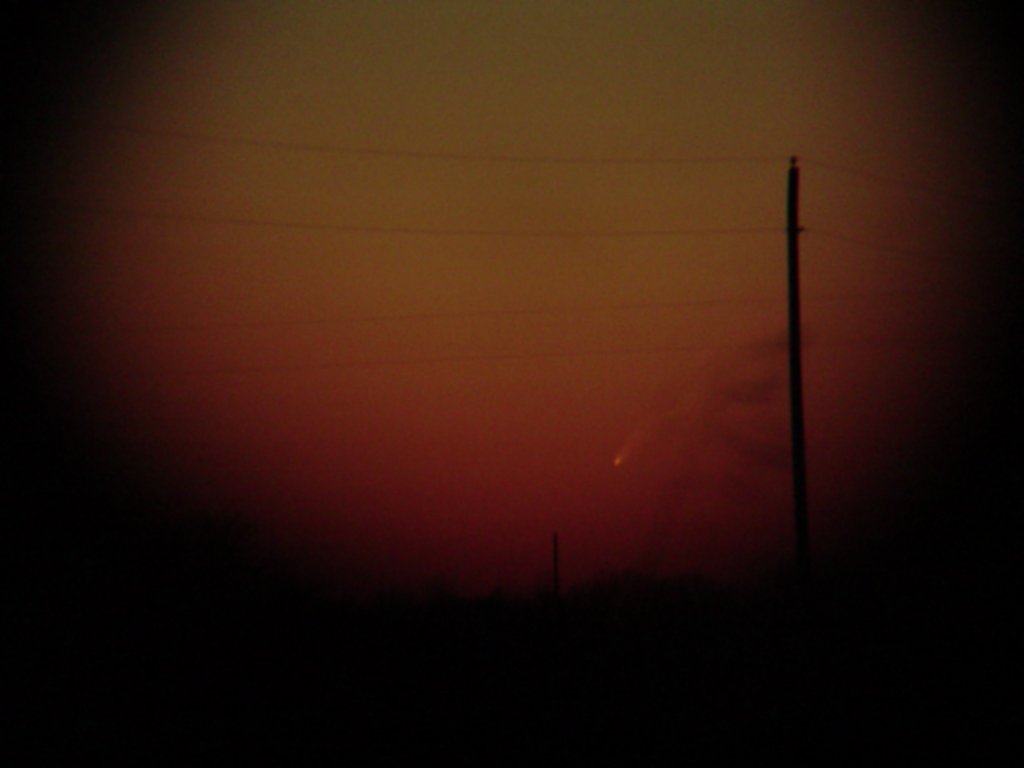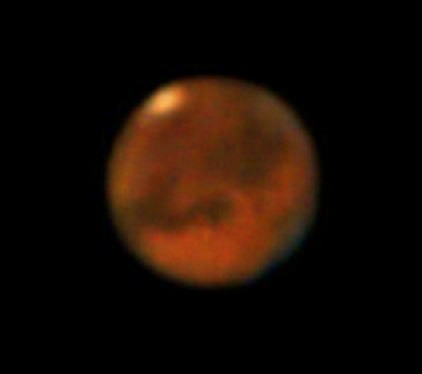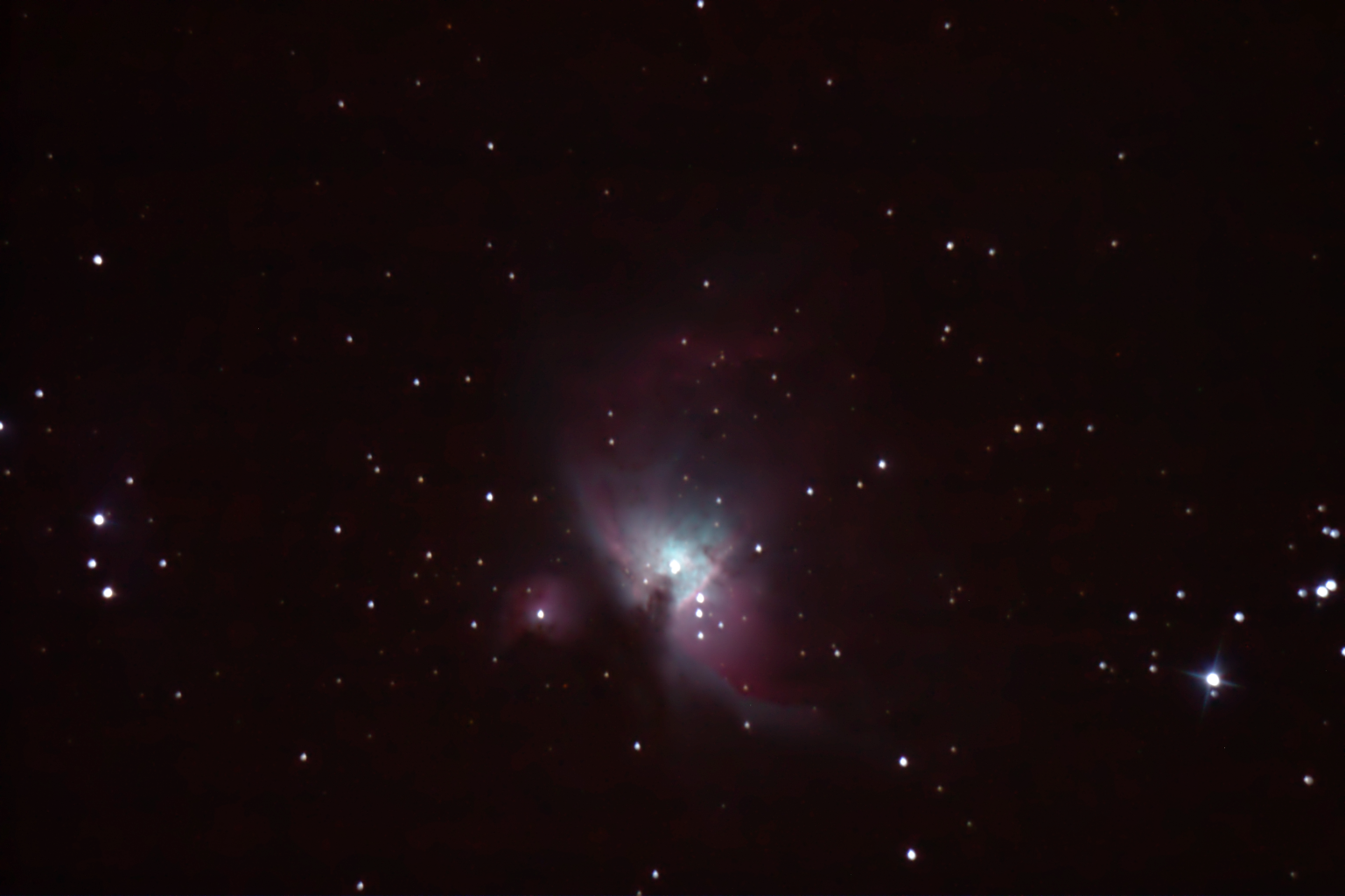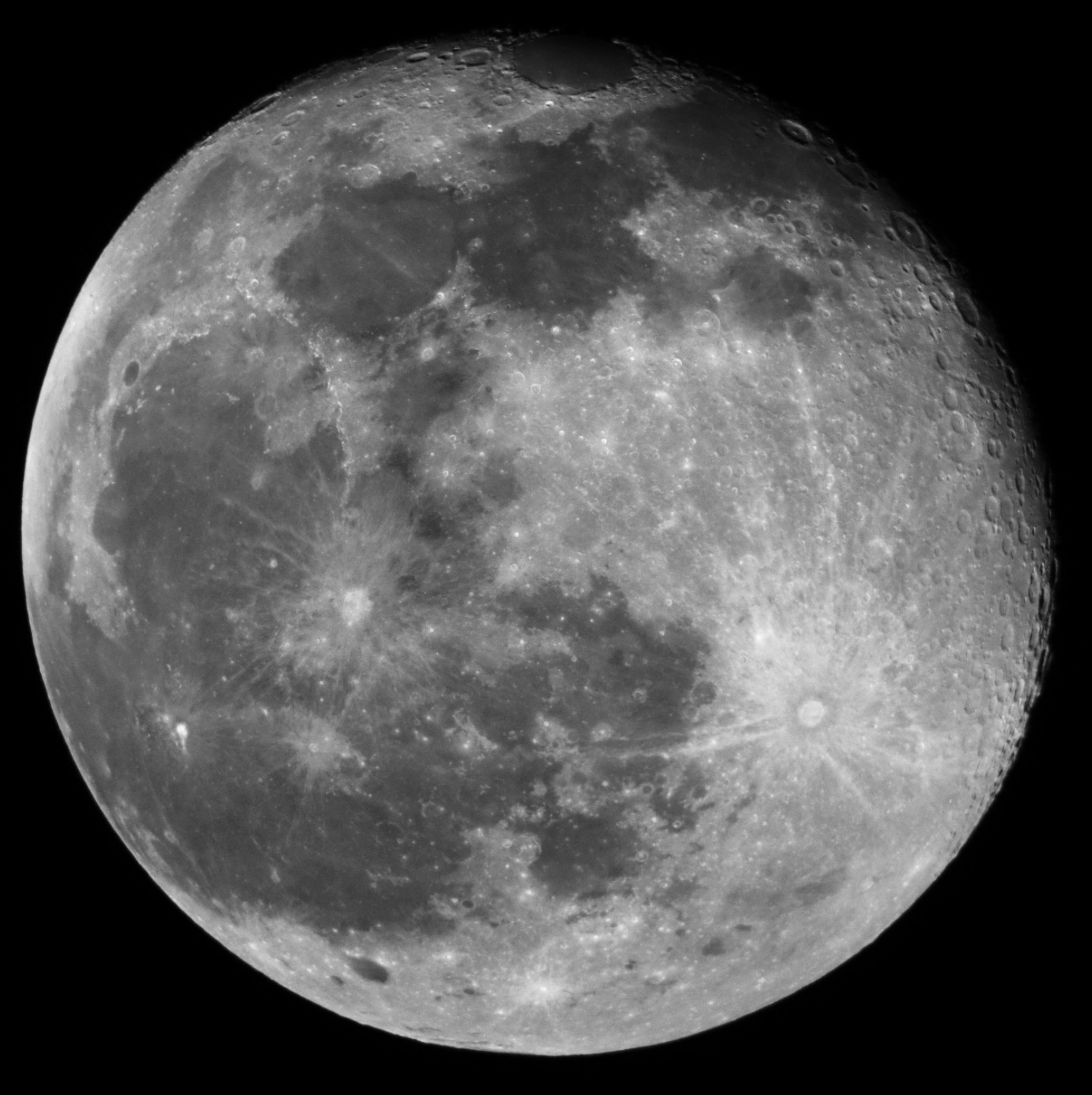
Astronomy
Here is a photo of comet McNaught that I took through a pair of binoculars just after sunset on January 10, 2007. I hadn't expected the comet to be much more than a blob, but to my surprise it was easily visible with the naked eye, and the brightest, longest comet I have ever seen. I ran inside and got my wife, son, and camera, and rushed back out to observe and photograph it before it slipped down over the horizon.

My first project in astrophotography was to photograph The Mars opposition in August of 2003.
Here is my best image from that opposition. The RGB components have been realigned in an attempt to compensate for atmospheric refraction. Note the South polar ice cap at the top of the image, and the blue atmospheric haze along the right edge of the planet. The dark curly feature just below center is Sinus Meridiani
I had only hoped to obtain an image with a few discernible land features, but there are many easily identifiable features in this image.

Another interesting astronomical event was this year's transit of Venus. Here is an image I took at the end of the transit, shortly after dawn on the morning of June 8th.
To take this picture I made an off-axis 3” aperture solar filter, using Baader Planetarium's neutral density Astrosolar film. This image is made from the green channel of the original image, to remove the effects of atmospheric refraction.
I then reduced the image to monochrome, and color corrected to the original dull yellow of the original image of the sun shortly after dawn.
In October of 2010, I took my first deep sky photographs. I still can't believe I'm taking these kinds of shots, and I can't wait to recollimate my telescope, and rebuild the mount for smoother tracking.
My first attempt was our nearest galactic neighbor, the Andromeda galaxy, and one of his neighbors. I was pleased to be able to see the dust lanes:
![]()
I next turned my telescope toward Orion's nebula, whose glory was a little easier for a beginner to capture:

Finally, here's a shot I snapped of the past-full moon during a Jupiter observing session just after its 2010 opposition..

I am always worried that the sky is too bright where I live. I found a good light pollution map of our area, Andy Puckett has kindly labeled the cities on the map which was originally produced by this organization.
Check out this Java Applet from NASA that shows the current locations of over 500 satellites.
![]()